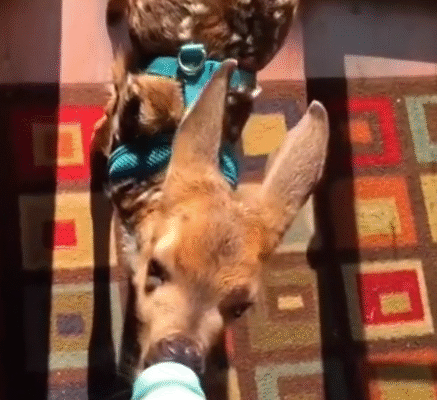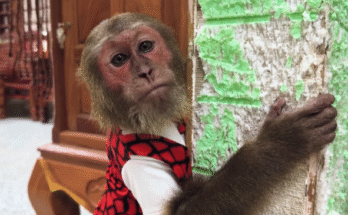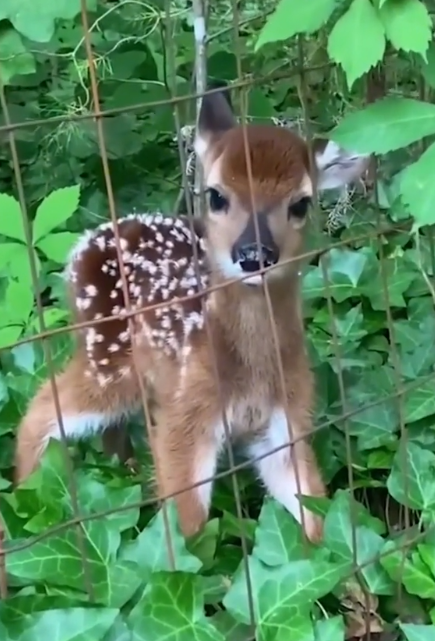
There is something undeniably enchanting about a baby deer. With its wide, gentle eyes, soft spotted fur, and unsteady little legs, a baby deer embodies innocence, curiosity, and the fragile beauty of nature. Whether found nestled in tall grass or cautiously following its mother through the trees, the presence of a baby deer always feels like a magical moment—a glimpse into the quiet wonders of the wild.
A New Beginning in the Forest
One crisp spring morning, deep in the heart of a quiet forest, a mother deer, or doe, gently gave birth to a tiny fawn. The sunlight filtered through the leaves, casting golden specks across the forest floor as the baby deer took its first breaths. Its fur was a warm reddish-brown, speckled with white spots that helped it blend perfectly into the dappled shadows of the woods.
The fawn was shaky at first, its legs wobbly like twigs in the wind, but instinct guided it to stand. Its mother nudged it lovingly with her nose, licking its fur to clean and warm it. The bond between them formed instantly—strong, silent, and pure. The doe watched protectively as her baby took its first awkward steps, stumbling, then finding balance, then taking a few bold strides forward.
Learning the Ways of the Wild
In the days that followed, the baby deer began to learn the rhythms of forest life. It stayed hidden in tall grass for most of the day, just as its mother taught it, remaining motionless to avoid attracting predators. Its spotted coat acted as camouflage, making it nearly invisible even in plain sight. When the time was right, the doe would return, and the little fawn would rise to feed and explore.
Everything was new and exciting to the baby deer. The rustle of the leaves, the songs of birds overhead, the smell of fresh pine in the air—each experience awakened its senses. It would curiously sniff wildflowers, chase butterflies, and try to mimic its mother’s graceful movements. Though still small and delicate, the fawn’s legs grew stronger each day, allowing it to hop and skip with increasing confidence.
The forest was its playground, and every corner held a new adventure. It found joy in the simplest things: the feel of cool earth beneath its hooves, the sound of a squirrel chattering in the trees, the way a light breeze would make the tall grass dance around it. These first weeks of life were filled with wonder and safety, thanks to the care of its devoted mother.
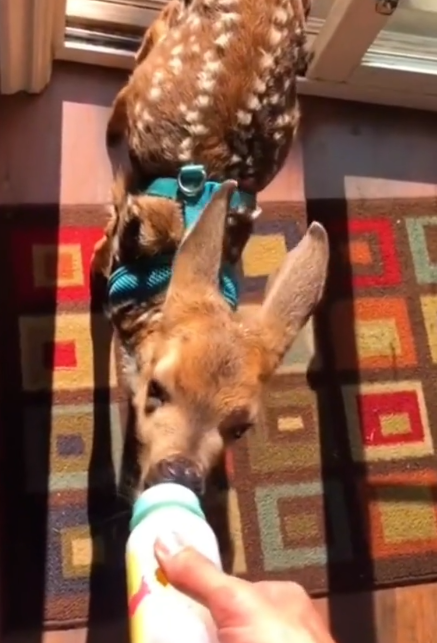
A Community of Care
The baby deer wasn’t entirely alone in the forest. Although deer are often quiet and solitary animals, they share their environment with many others—foxes, rabbits, songbirds, and more. Occasionally, the fawn would spot another mother and her own baby nearby, and though they kept their distance, there was a sense of shared understanding among them.
One particularly heartwarming day, the baby deer met a curious raccoon who had wandered too close. At first, the fawn froze, unsure of what to do. But the raccoon, playful and bold, chattered cheerfully and sniffed around. The two young animals looked at each other for a long moment—two different creatures, both learning the world for the first time. After a few minutes, the raccoon scampered off, leaving the fawn blinking in awe at the encounter.
These gentle interactions reminded the baby deer that the forest was not just a place of survival—it was a community. The trees, the wind, the creatures, and the earth itself all played a role in this delicate ecosystem. And the fawn was now a part of it, growing each day into its role.
A Growing Confidence
By the time summer arrived, the baby deer had grown taller and more confident. It could now keep up with its mother, trotting easily through the woods and even leaping over small fallen branches. It learned to listen closely for signs of danger—like the call of a hawk or the distant growl of a predator—and to freeze or flee when needed.
But most of the time, the forest remained peaceful. The fawn would lie in a meadow under the sun, its ears twitching at every sound, its eyes half-closed in comfort. Sometimes, it would nuzzle its mother, or playfully butt heads with a sibling born just days after it.
Its spots, once a key part of its camouflage, began to fade as it aged. But its eyes remained wide and expressive, full of curiosity and gentleness. Every movement the young deer made seemed to radiate elegance—soft steps, long graceful limbs, and that ever-alert, cautious demeanor.
A Symbol of Peace and Beauty
To humans who might catch a glimpse of a baby deer from afar, the moment often feels magical. Perhaps you’re hiking through a trail and suddenly notice a small shape standing in the clearing. The baby deer pauses, locks eyes with you for a breathless moment, then disappears gracefully into the trees. That fleeting interaction stays in your mind long after it’s gone.
In many cultures, the deer—especially the baby deer—is seen as a symbol of peace, gentleness, and new beginnings. Its presence reminds us to slow down, observe nature, and find beauty in simplicity. Watching a baby deer navigate the forest, we’re reminded of how vulnerable yet resilient life can be.
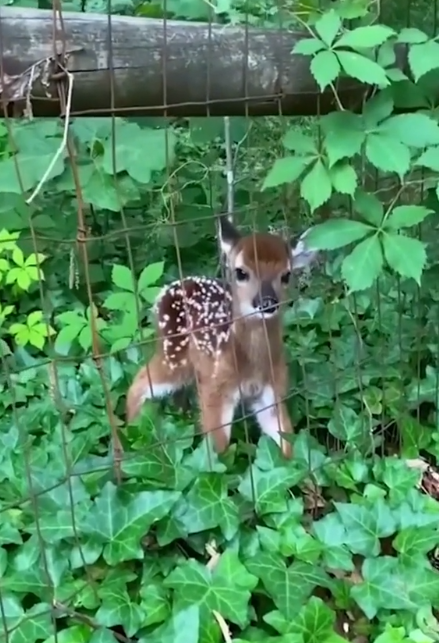
The Seasons Turn
As autumn approaches, the baby deer grows more independent. Its mother still stays close, but the fawn begins exploring on its own for longer stretches of time. It learns which plants are safe to eat, how to cross streams carefully, and how to stay warm when the evenings grow cooler. The forest changes color around it—reds, oranges, and golds painting the trees—and the air is filled with the scent of fallen leaves.
The baby deer, now several months old, is no longer quite so small. But it still carries that same spark of wonder that it had when it first stood on wobbly legs. It continues to learn, to grow, and to live gently in a world that can be both beautiful and wild.
A Lasting Impression
The story of a baby deer may seem simple, but in that simplicity lies something profound. Its journey from birth to young adulthood mirrors the paths we all take—full of first steps, moments of fear and joy, learning, and growth. It reminds us of the tenderness of life and the strength found in even the most fragile creatures.
Whether you see one in real life or just imagine it in a story like this, a baby deer always leaves a mark on the heart. Its innocence, grace, and quiet courage are unforgettable.
And so, the cute baby deer continues its life in the forest—ever curious, ever gentle, and always a symbol of nature’s purest beauty.
